I launched the Wild Way newsletter just over two years ago as a way for us all to explore improving gardens as habitats for wildlife together. Using wild spaces as inspiration to grow plants in their natural way. Studying which insects use each plant is an important part of this. Such as the early emerging bumblebees in our garden that rely so much on the nectar of Pulmonaria (above).
On the flip side, while Pulmonaria and dandelions are frequently visited by bees, hoverfly, flies and other pollinators, the blue grape Muscari (shown above) I haven’t ever seen anything using. If you’re new to studying insects it can be a bit overwhelming, like learning an entirely new language, so where to start? Well, firstly don’t stress. You don’t need to know what every insect is. My top tip for beginners is just to look, what insects do you see on plants? When? And what differences do you notice in the colours and shapes of each insect?
Take some photos to look at the detail more closely, and use Google image search (click the camera icon), where you search using a photo, to try and narrow down what it is. This isn’t perfect but it does help guide you. There are lots of great groups dedicated to insects on Facebook and Twitter who are happy to identify for you.
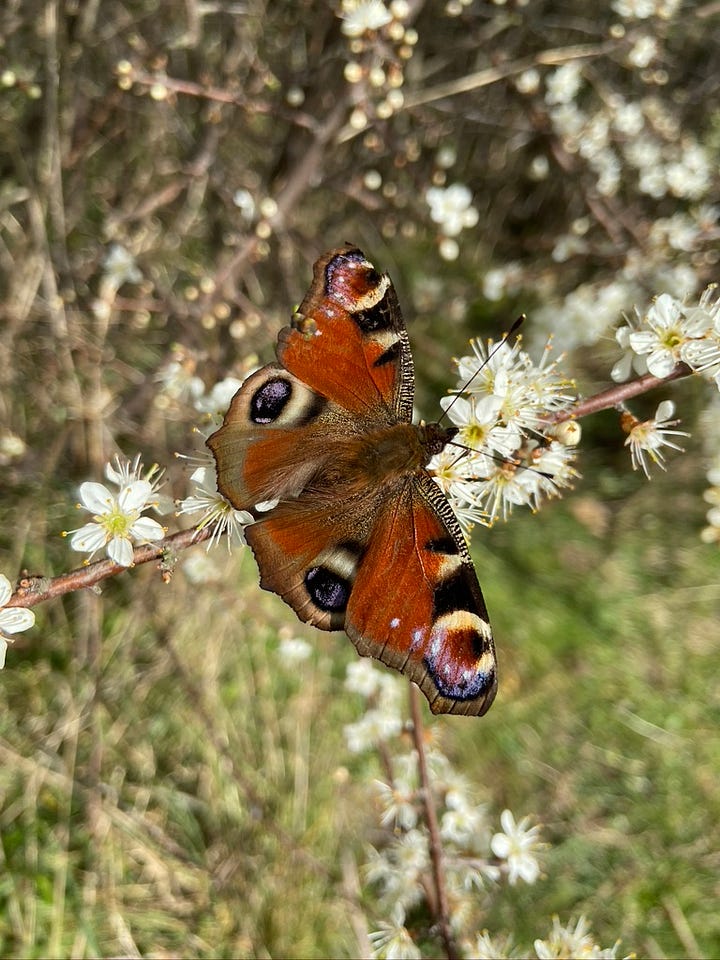
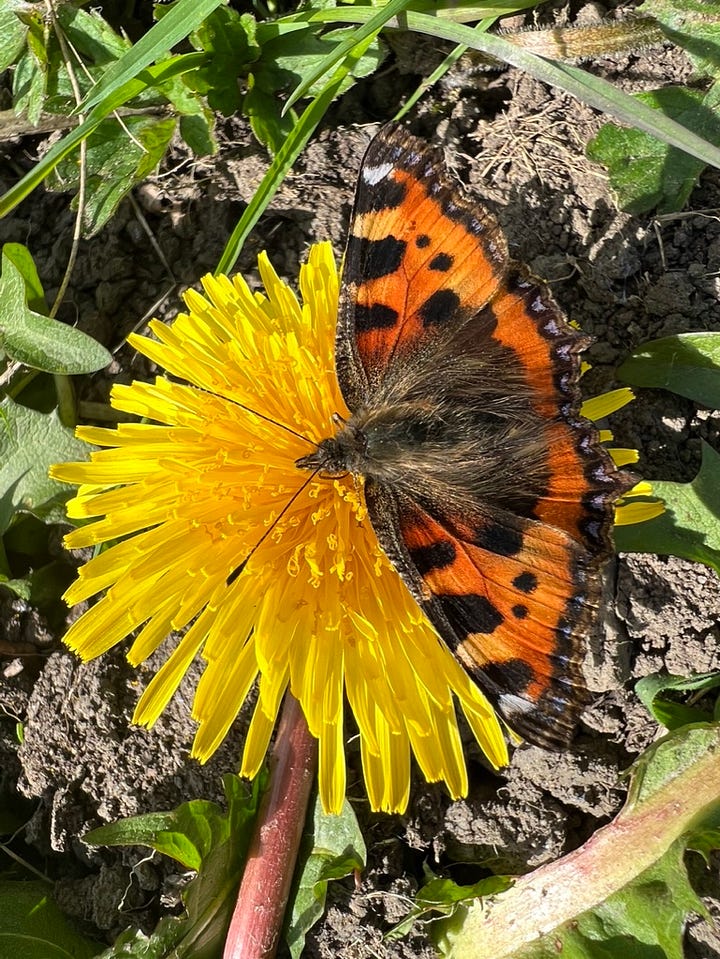
There are many different species and variations of each type of insect and they exist as part of ecosystems for a reason. Butterflies come in all shapes and sizes, you may notice them at different times of the year, or in different places. Such as peacock butterfly (Aglais io) on blackthorn above (Prunus spinosa) and small tortoisehell (Aglais urticae) on a dandelion (Taraxacum spp.) in the open space of our lawn path. We have many woodland dwelling butterflies in shades of brown, so often overlooked but are stunning when you stop to look at them closely. What you may not notice are their caterpillars often eating long grass and leaves of herbaceous and woody plants - the more caterpillars the more butterflies.
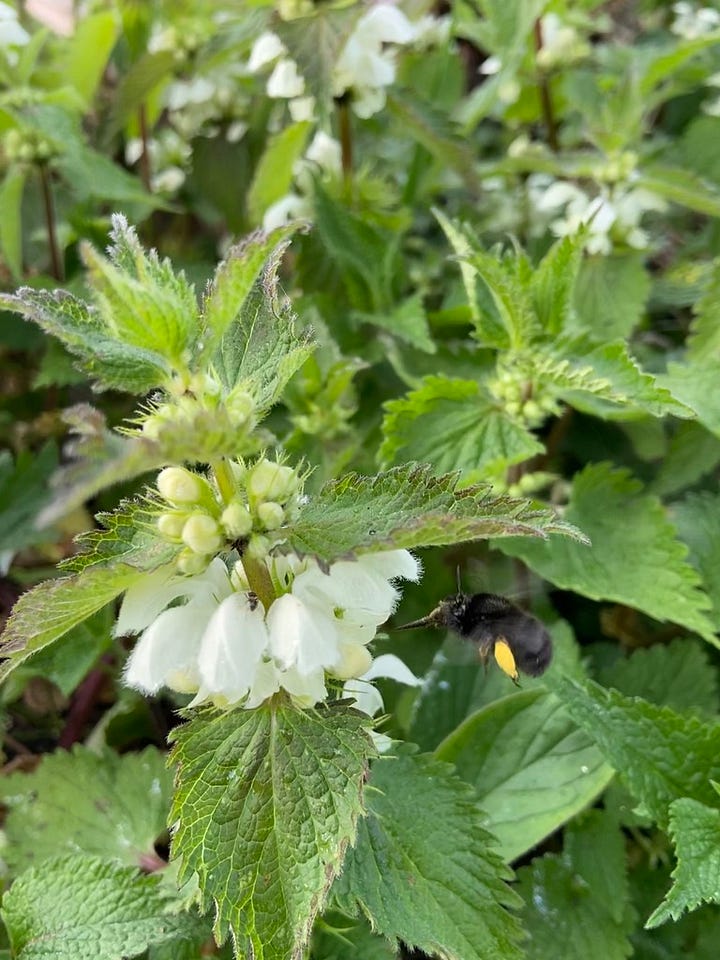

The more you look at insects the more differences you’ll spot. For instance, the above two insects may look similar, however on the left is a bee feeding on white deadnettle (Lamium album) but on the right is actually a fly. The super cute fluffy bee fly, Bombylius discolor. You’ll spot these a lot in spring and early summer. The easiest way to tell the difference between bees and flies I find is to look at the faces. Fly eyes are large and round, while bees are smaller and elliptical. Bees have four wings, flies two, and bees have longer antennae. Once you start looking for this you’ll be amazed how many bees look like flies and vice-versa.
Above is a female tawny mining bee (Andrena fulva) resting on a red currant leaf. Many bees are solitary, not living in hives, and this is one you’re most likely to spot this weekend or in early spring. As the name suggests, they dig little burrows in lawns and other spots where soil is easily accessible.
It’s not really possible to give a set formula of what plants to grow for insects because there are too many plants, too many insects and too many differences in conditions of gardens. Instead what I hope to pass on is how you can study insect use of plants to make your own decisions for your garden. If everyone does the same, your own personal preferences for flowers and colour will shape a diverse world that caters for all people and all insects.
That said, here are some of the plants I’ve noticed are most used by pollinators at the start of spring:
Blackthorn (Prunus spinosa - shrub)
Daffodils (any large single flowered - bulb)
Hawthorn (Crataegus monogyna - small tree)
Pulmonaria (any colour - perennial)
Tulipa turkestanica (show above, single flowered - bulb)
Willow (can be coppiced to contain their size - medium tree)
Learn more about insects by visiting the Wildlife Trusts website, a conservation charity offering loads of great insect pictures and information for identifying them. There are lots of regional Wildlife Trusts in the UK, so you’ll be able to find one in your area and even visit one of their nature reserves near you.
For instance, we live in Yorkshire and I’ve been getting to know the Yorkshire Wildlife Trust and their #TeamWilder initiative. I’m supporting their recently launched Wildlife Gardening Award which is easy and fun to take part in. If you’re in the area check them out, or look for one in your area doing similar things!
Most importantly, put down this email, pop outside in the sun and let me know what insects you spot :)




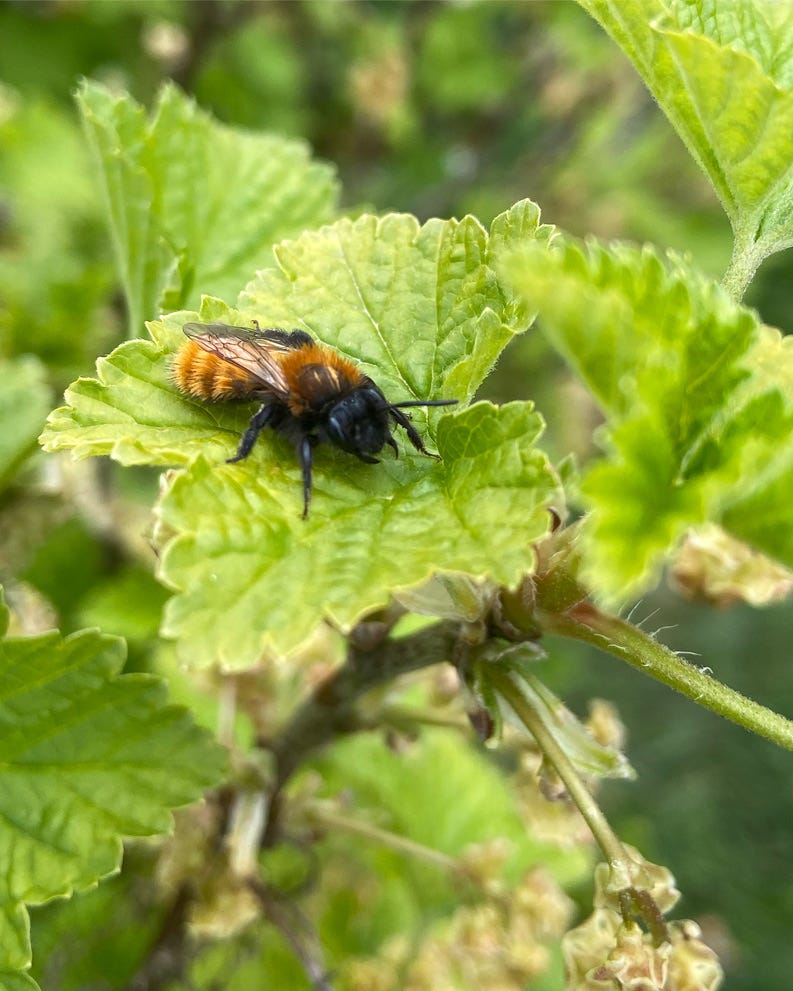
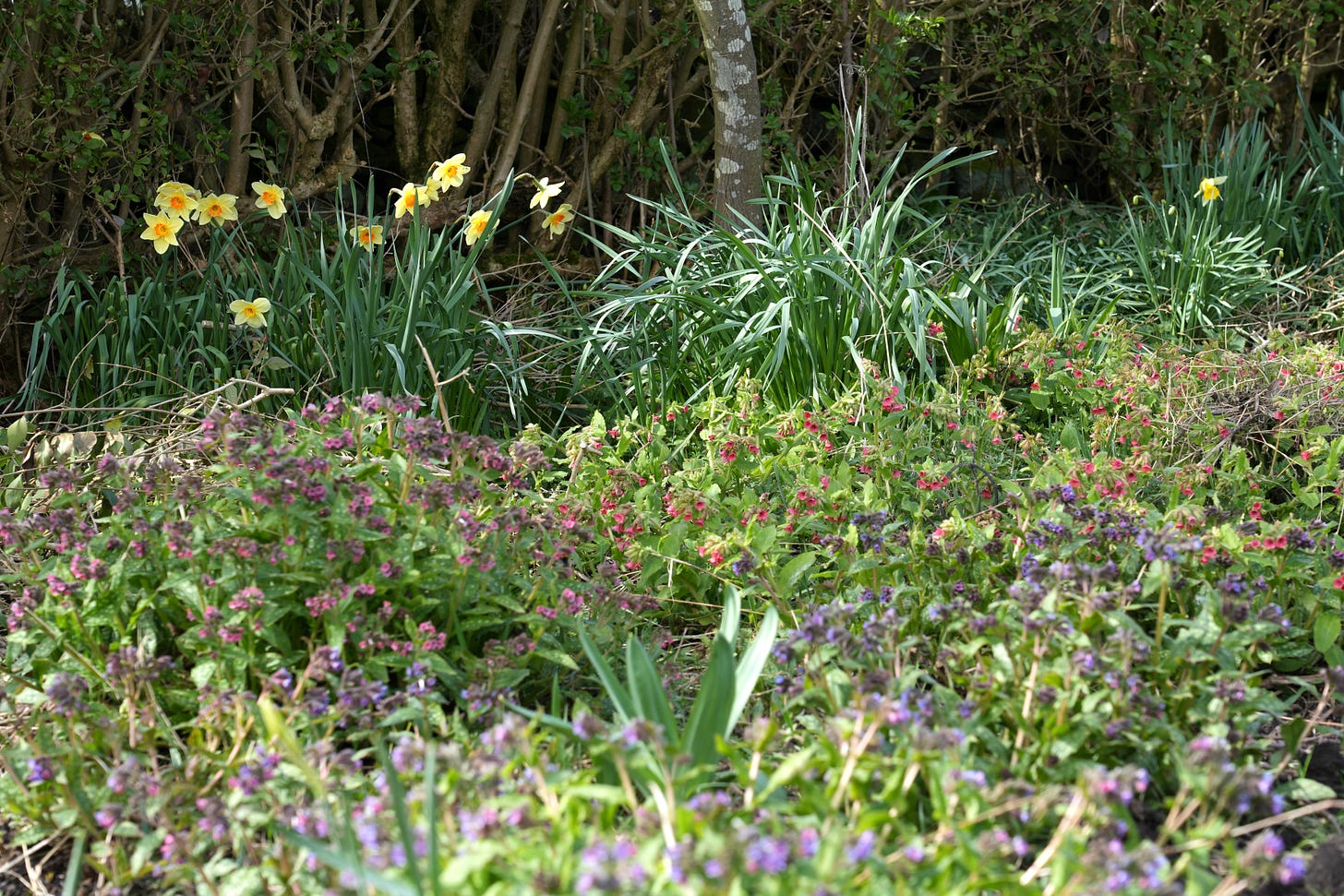
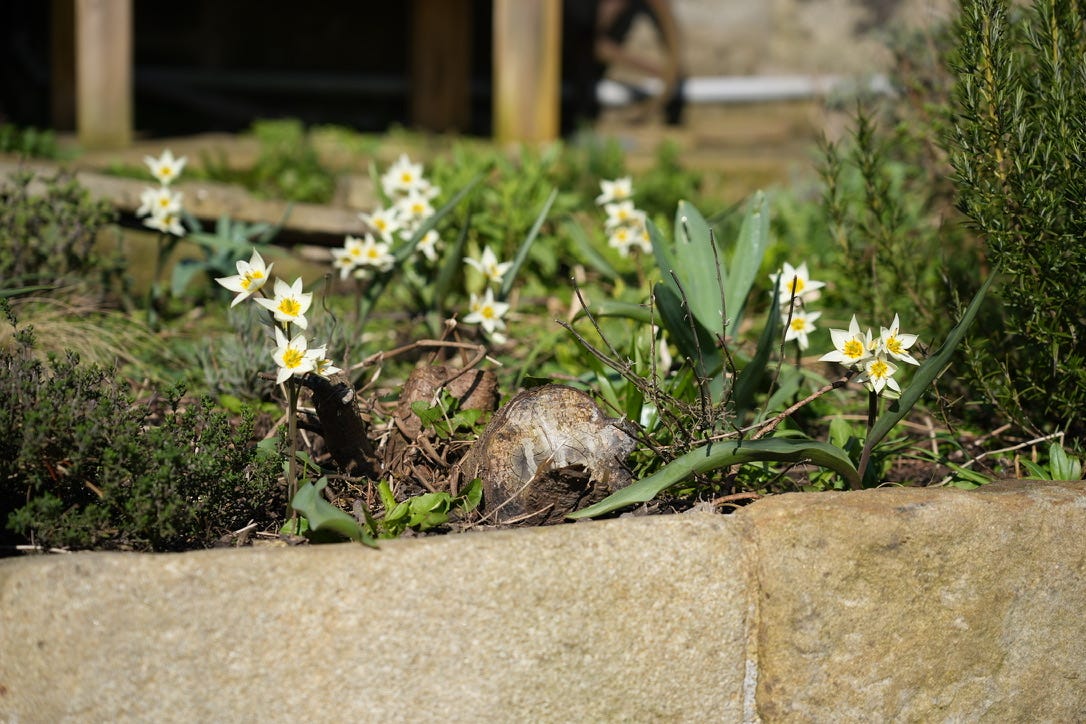

Have you used the app Seek? It’s a really fun, easy way to identify all forms of nature - especially for amateurs like me. :)
Lovely article thanks Jack. I do my best to identify invertebrates in my garden, but sooo much to learn! The main insects I have been spotting in recent weeks are queen bumble bees - loving the stinking hellebores (hellebores foetidus) and I guess searching for suitable nesting sites as they bumble around!